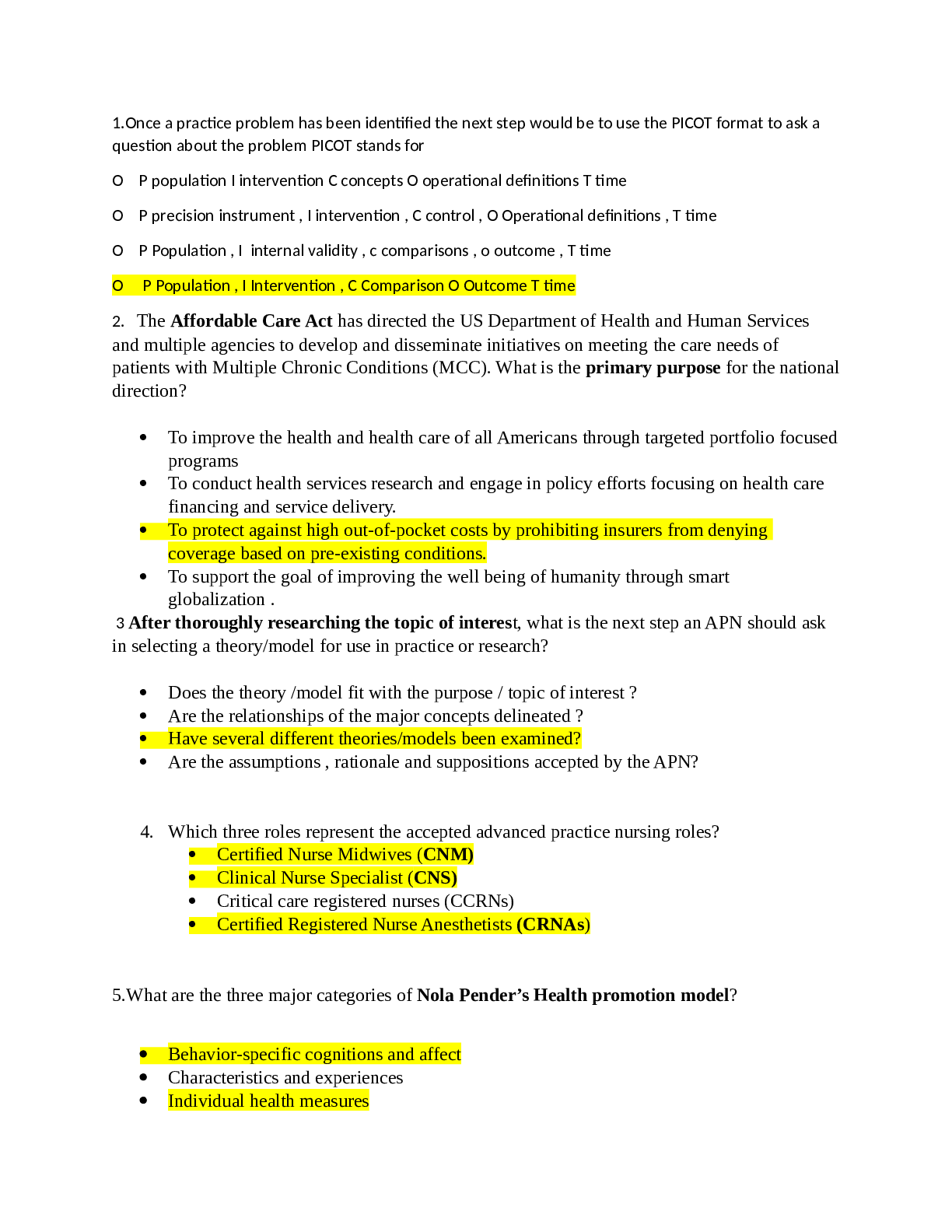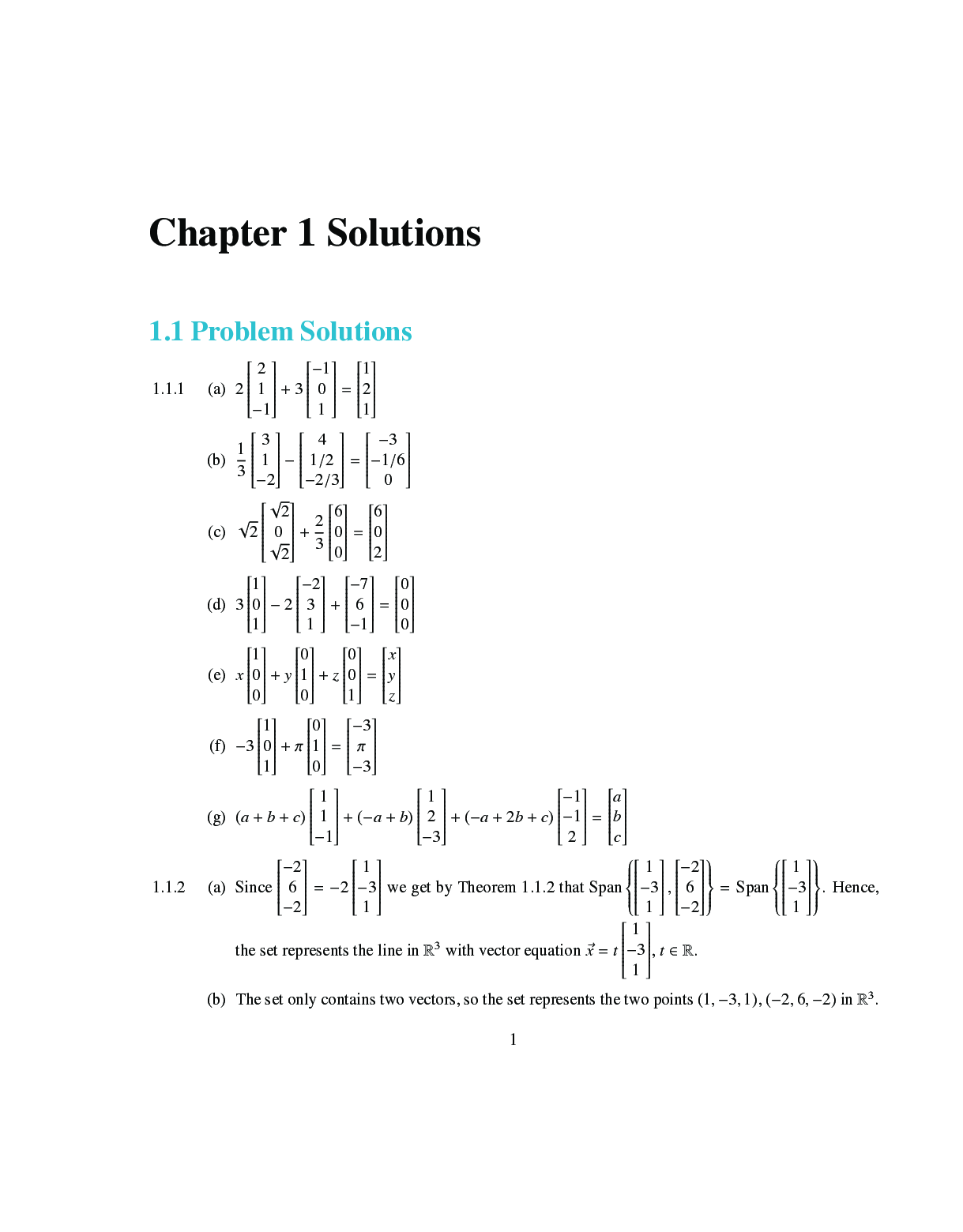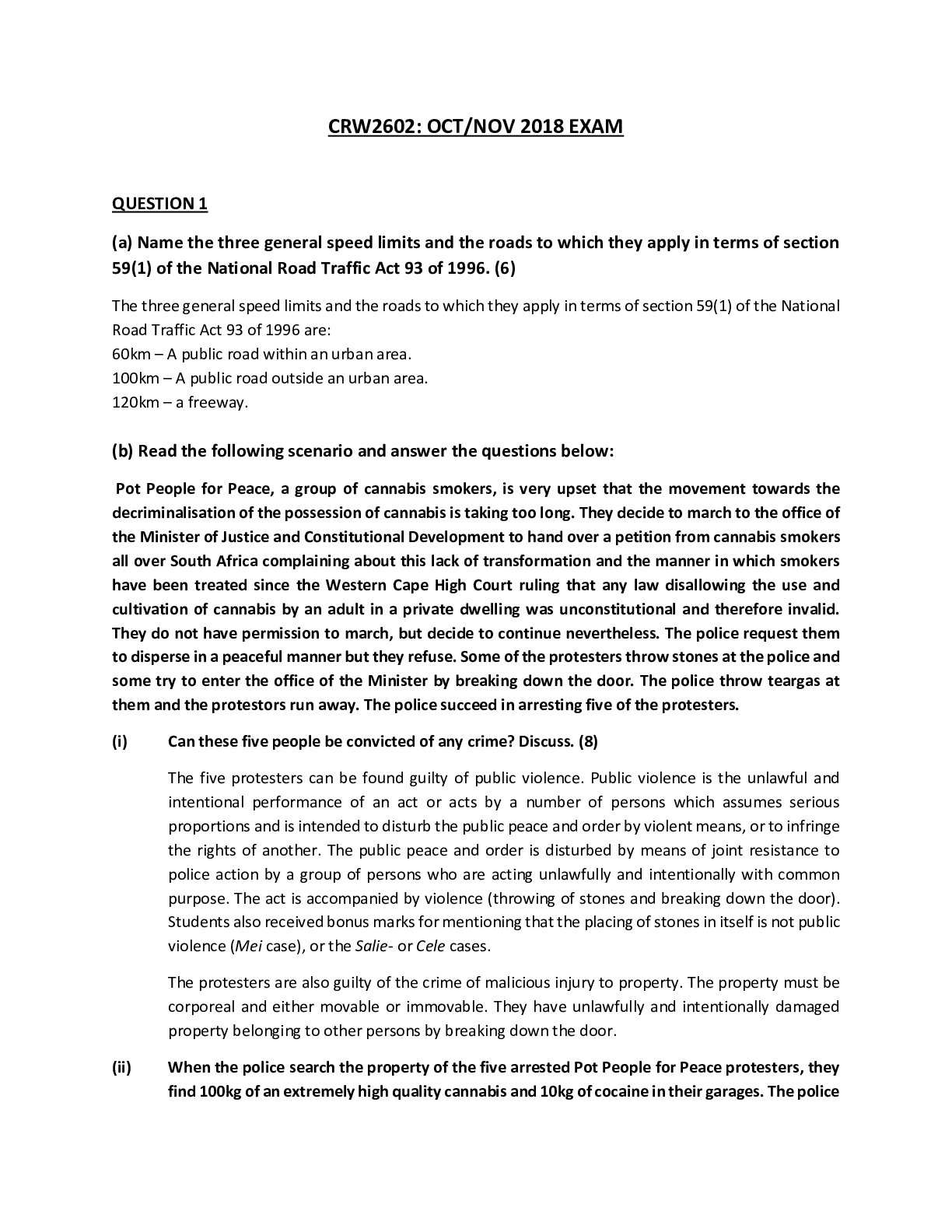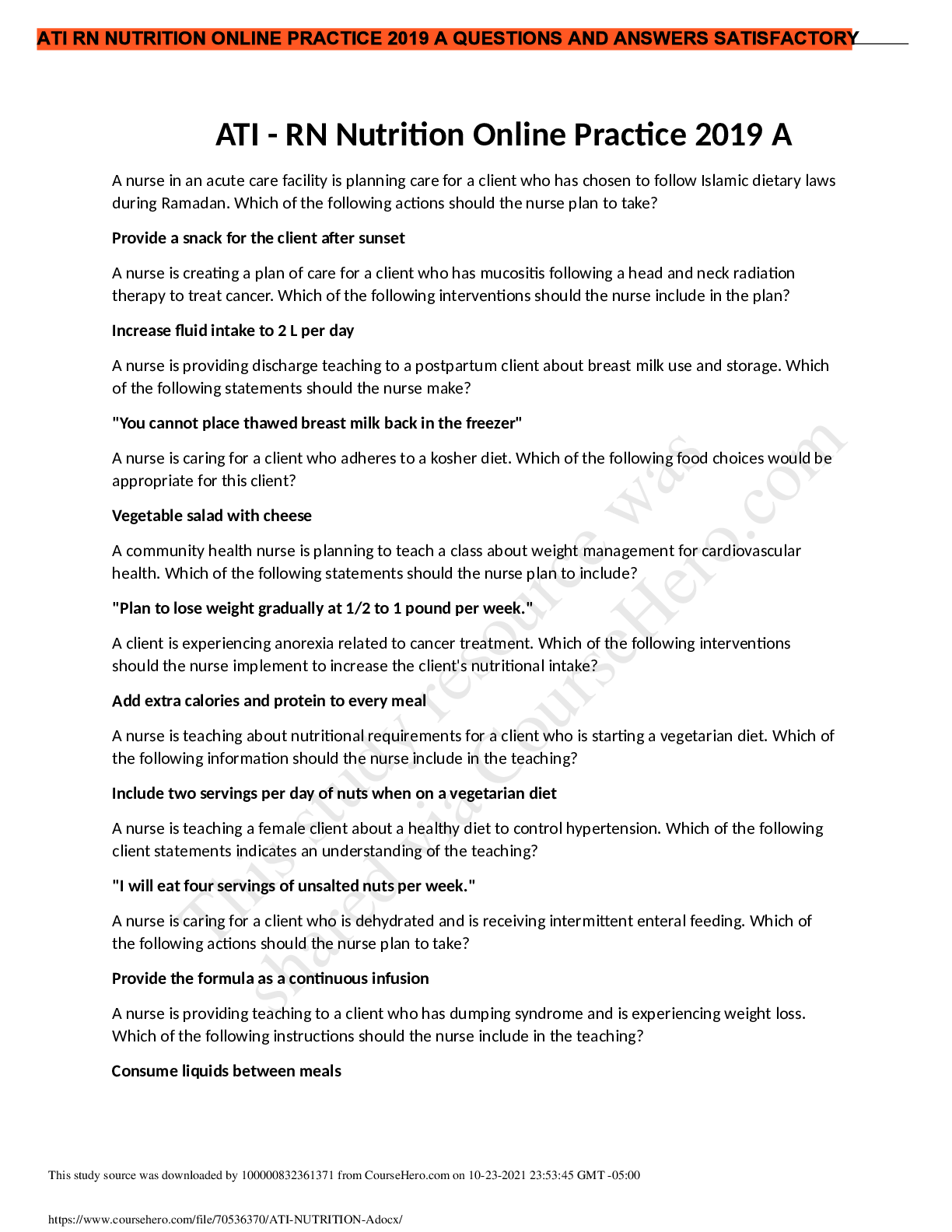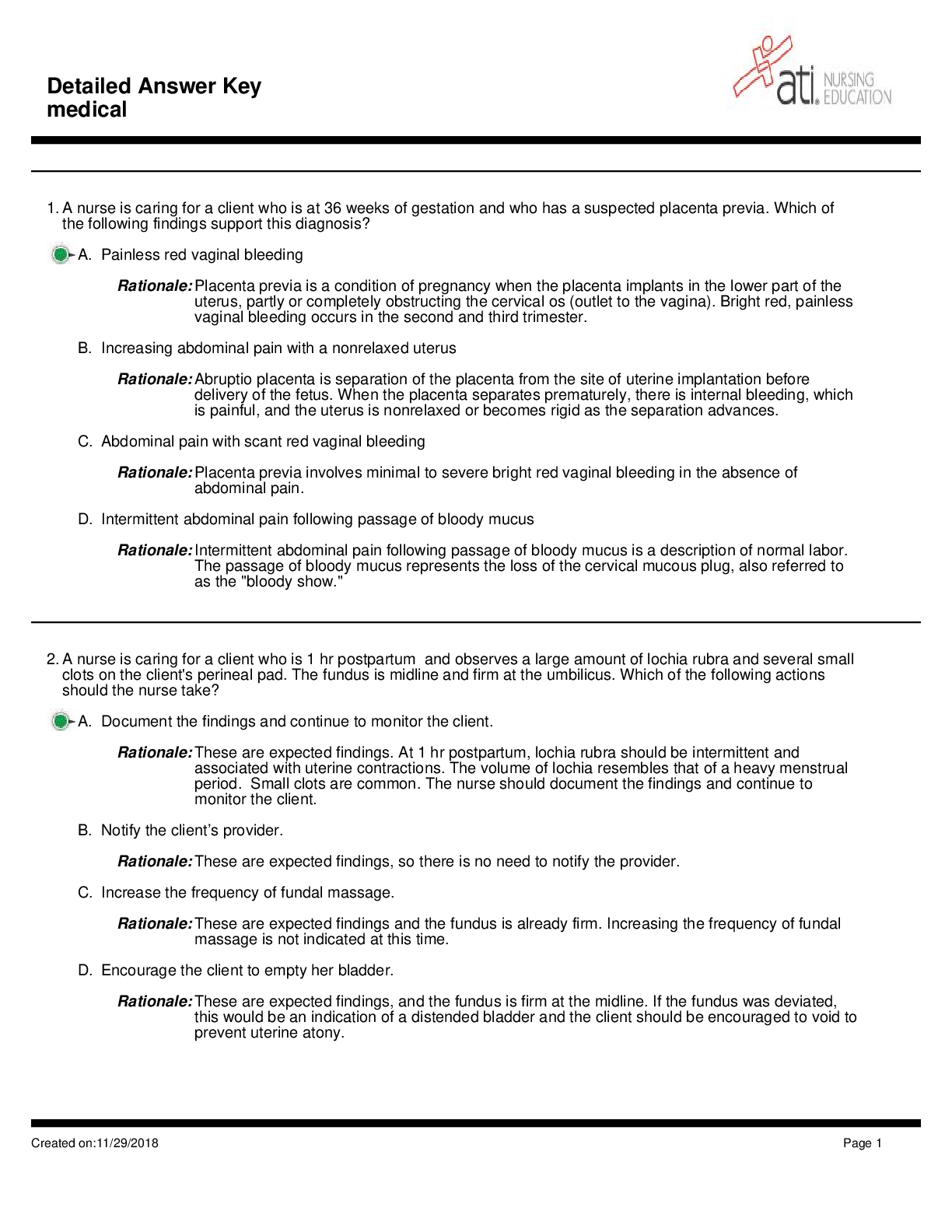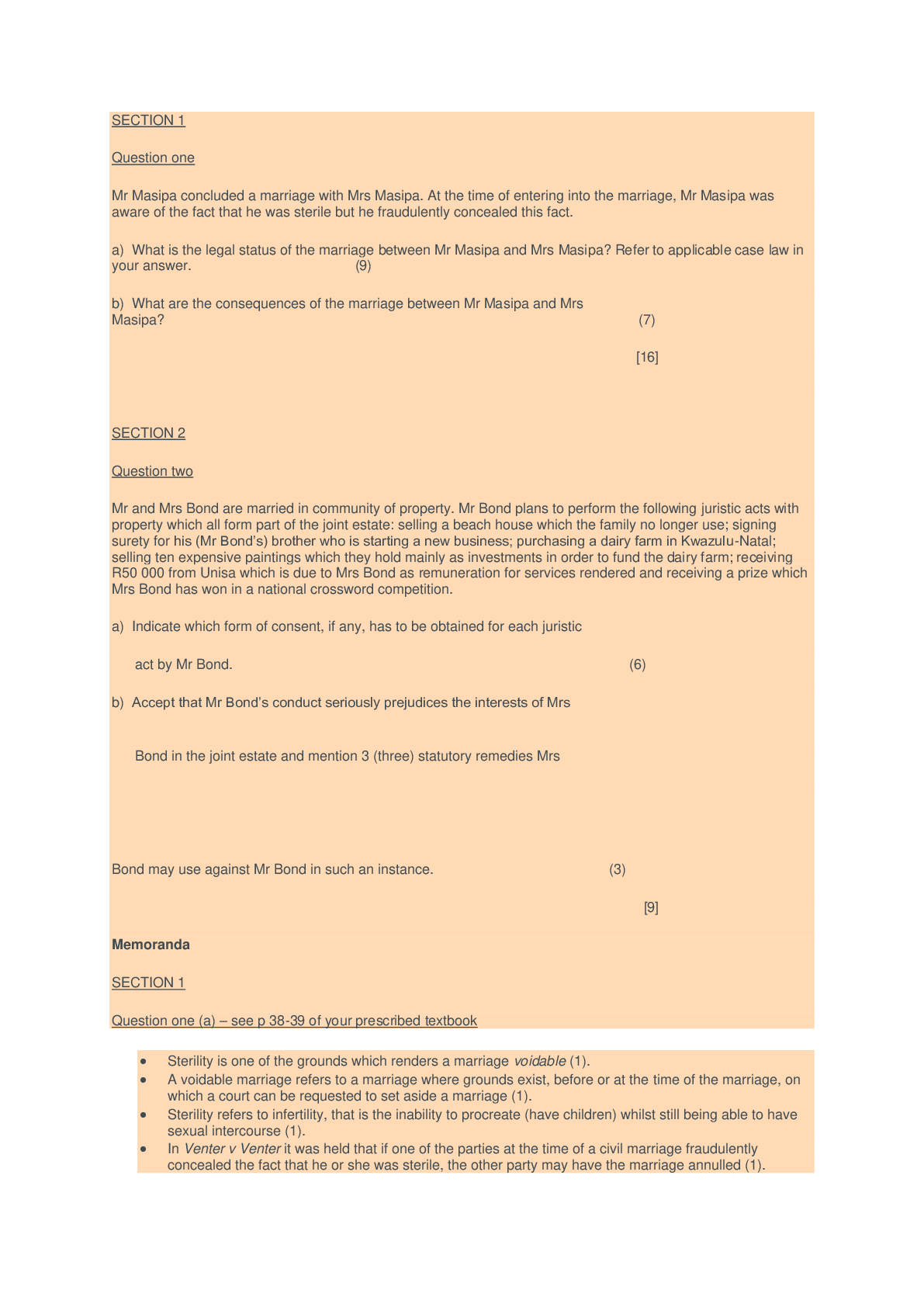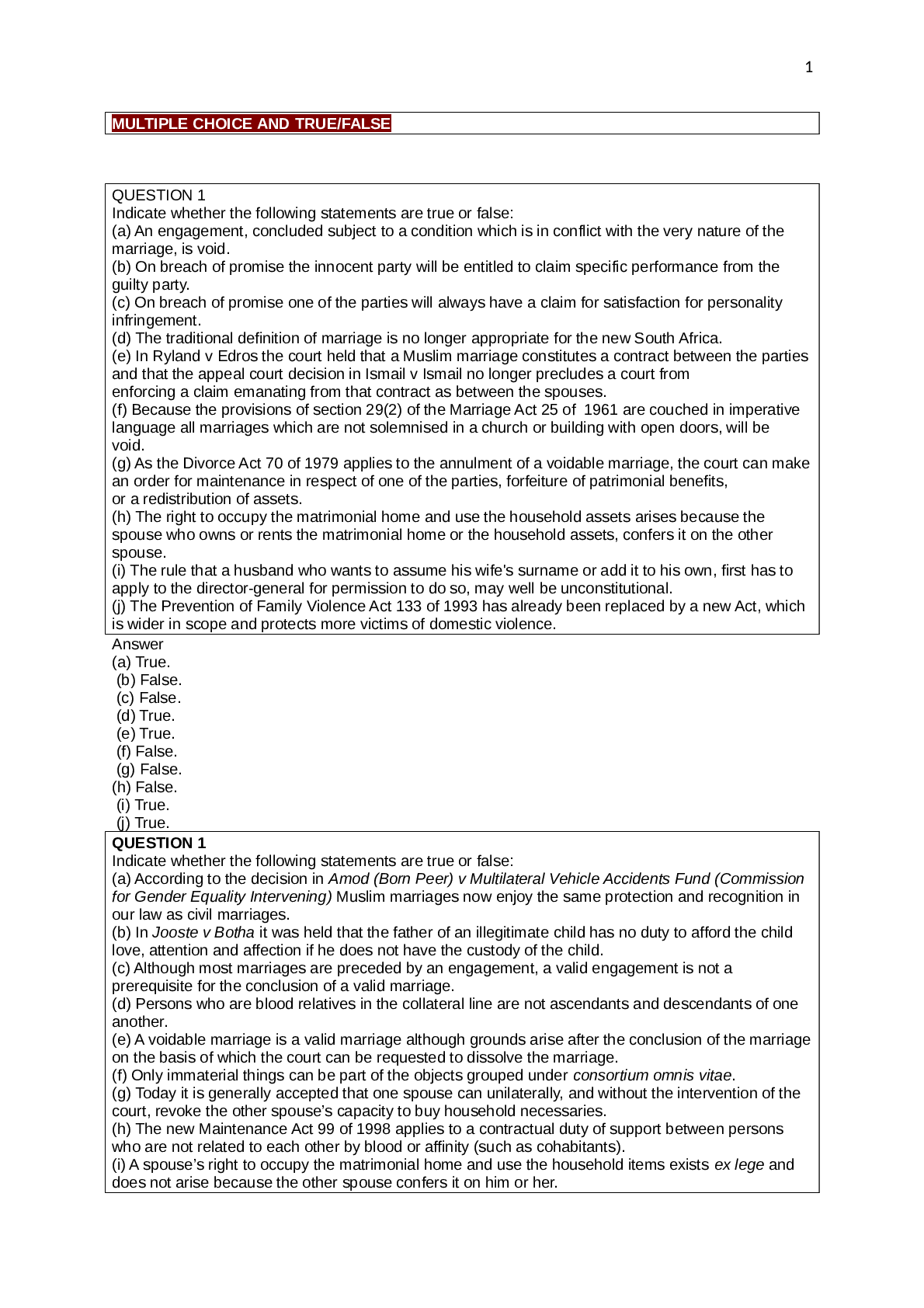*NURSING > QUESTIONS & ANSWERS > PERIOPERATIVE NURSING TEST BANK. VERY COMMON FINAL EXAM QUESTIONS WITH ANSWER KEY. 100% CORRECT (All)
PERIOPERATIVE NURSING TEST BANK. VERY COMMON FINAL EXAM QUESTIONS WITH ANSWER KEY. 100% CORRECT
Document Content and Description Below
1. There are discharge criteria for clients in the post anesthesia care unit (PACU) regardless of the type of anesthesia used and additional criteria for specific types of anesthesia. Which is the c... riterion specific for the client who has received spinal anesthesia? 1. Oxygen saturation reaches the presurgical baseline. 2. Motor and sensory function returns. 3. Nausea and vomiting are minimal. 4. Headache is reported as tolerable. 2. A client is admitted to the postanesthesia care unit. Which nursing action is most important during the client’s stay in this unit? 1. Monitoring urinary output 2. Assessing level of consciousness 3. Ensuring patency of drainage tubes 4. Suctioning mucus from respiratory passages 3. A postoperative client is transferred back to the surgical unit with an abdominal dressing and a Penrose drain. Which is the most important nursing action associated with caring for a client with a Penrose drain? 1. Removing the excess external portion until drainage stops 2. Changing the soiled dressing carefully 3. Maintaining the negative pressure 4. Pinning the drain to the dressing 4. A client has abdominal surgery. Which should the nurse do to best assess for a sign of postoperative ileus in this client after surgery? 1. Identify the time of the first bowel movement. 2. Monitor the tolerance of a clear liquid diet. 3. Palpate for abdominal distention. 4. Auscultate for bowel sounds. 5. Four days after abdominal surgery, while being transferred from a bed to a chair, a client says to a nurse, “My incision feels funny all of a sudden.” Which should the nurse do first? 1. Take the vital signs. 2. Apply an abdominal binder immediately. 3. Place the client in the low-Fowler position. 4. Encourage slow deep breathing by the client. 6. Which factor places a client at the highest risk for postoperative nausea and vomiting after receiving general anesthesia. 1. Obesity 2. Inactivity 3. Hypervolemia 4. Unconsciousness 7. On the second postoperative day after an above-the-knee amputation, the client’s elastic dressing accidentally comes off. Which should the nurse do first? 1. Wrap the residual limb with an elastic compression bandage. 2. Apply a saline dressing to the residual limb. 3. Notify the primary health-care provider. 4. Place two pillows under the limb. 7745_Ch05_297-452 29/11/18 3:37 PM Page 432 8. A nurse is caring for a postoperative client. Which action is effective in preventing postoperative urinary tract infections? 1. Eating foods with roughage 2. Taking sitz baths twice a day 3. Drinking an adequate amount of fluid 4. Increasing the intake of citrus fruit juices 9. A client received conscious sedation during a colonoscopy. Which should the nurse expect regarding the client’s experience with this procedure? 1. Client will be unresponsive and pain free. 2. Client will be at risk for malignant hyperthermia. 3. Client will be sleepy but able to follow verbal commands. 4. Client will be positioned in the supine position to prevent headache. 10. Which client having emergency surgery should the nurse anticipate to be at the highest risk for postoperative mortality? 1. Individual who has alcoholism 2. Person who has epilepsy 3. Middle-age adult 4. Infant 11. A nurse is caring for a client who had an abdominal hysterectomy. Which intervention best prevents postoperative thrombophlebitis? 1. Utilization of compression stockings at night 2. Deep breathing and coughing exercises daily 3. Leg exercises 10 times per hour when awake 4. Elevation of the legs on 2 pillows 12. An obese client has abdominal surgery for removal of the gallbladder. Which should the nurse be most concerned about if exhibited by the client? 1. Constipation 2. Urinary retention 3. Shallow breathing 4. Inability to provide self-care 13. A client arrives in the postanesthesia care unit. Which is the most important information that the nurse needs to know? 1. Anxiety level before surgery 2. Type and extent of the surgery 3. Type of intravenous fluids administered 4. Special requests that were expressed by the client 14. Which client responses best support the decision to discharge the client from the postanesthesia care unit? 1. Sao2 of 95%, vital signs stable for 30 minutes, active gag reflex 2. Tolerable pain, ability to move extremities, dry intact dressing 3. Urinary output of 30 mL/hr, awake, turning from side to side 4. Afebrile, adventitious breath sounds, ability to cough 15. How many days after surgery should the nurse anticipate that a postoperative client will begin to exhibit signs and symptoms of a wound infection if it should occur? 1. Fifth day 2. Third day 3. Ninth day 4. Seventh day 16. A nurse is assessing a client who had spinal anesthesia. For which common response should the nurse assess the client? 1. Headache 2. Neuropathy 3. Lower back discomfort 4. Increased blood pressure 17. A hospitalized client who has been receiving medications via a variety of routes for several days is scheduled for surgery at 10 a.m. Which should the nurse plan to do on the day of surgery? 1. Use an alternative route for the oral medications. 2. Withhold all the previously prescribed medications. 3. Withhold the oral medications and administer the other drugs. 4. Obtain directions from the primary health-care provider regarding the medications. 18. Which is the most common dietary prescription the nurse can anticipate after a client who had abdominal surgery exhibits a return of intestinal peristalsis. 1. Clear liquids 2. Full liquids 3. Low fiber 4. Regular 19. A nurse compares the advantages and disadvantages of a central venous catheter inserted into a peripheral vein and a central venous catheter inserted into a subclavian vein. Which of the following does the nurse conclude is the reason why a peripheral catheter is more desirable? 1. Because it will not be in the superior vena cava 2. Because it will not cause a tension pneumothorax 3. Because it will not prevent the development of an infection 4. Because it will not allow large volumes of fluid to be administered [Show More]
Last updated: 2 years ago
Preview 1 out of 21 pages

Buy this document to get the full access instantly
Instant Download Access after purchase
Buy NowInstant download
We Accept:

Reviews( 0 )
$22.00
Can't find what you want? Try our AI powered Search
Document information
Connected school, study & course
About the document
Uploaded On
Apr 26, 2021
Number of pages
21
Written in
Additional information
This document has been written for:
Uploaded
Apr 26, 2021
Downloads
0
Views
147


